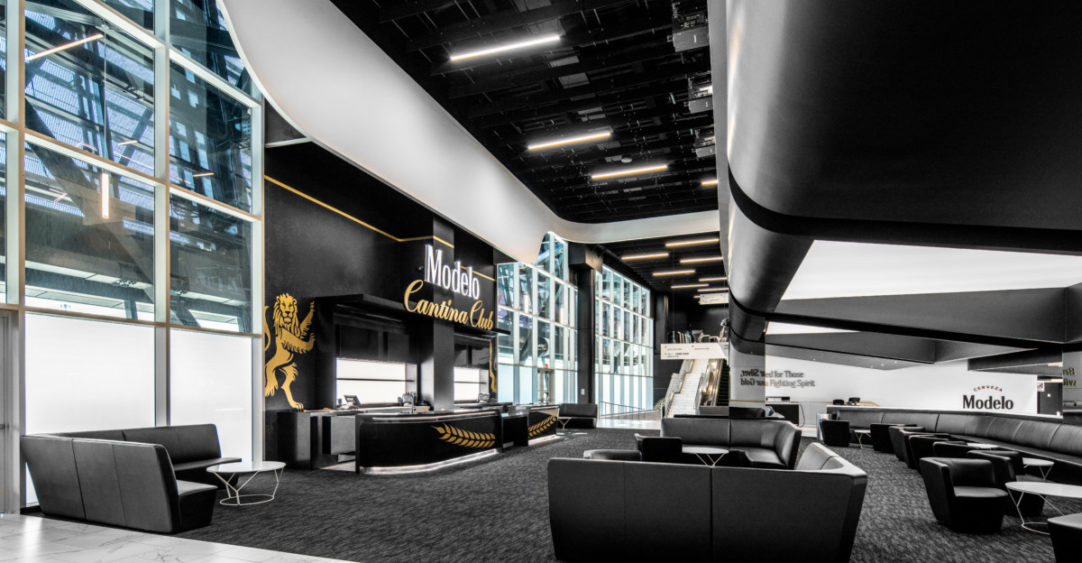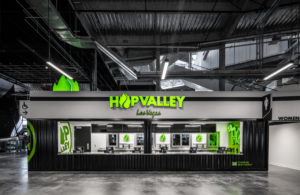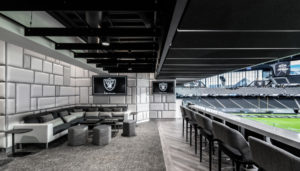
The Future of Sports Facilities: A Recap
In October, several SSR colleagues attended a breakfast panel hosted by Turner Construction Company, The Nashville Sports Council, and ACEC Tennessee about “The Future of Sports Facilities.” This event was hosted in First Horizon Ballpark (an SSR-designed facility) and was a great forum to listen and discuss the trends shaping the future of our industry.
Post-Covid Design
The panelists spent time focusing on the emergence of COVID-19 over the past two years and the resulting change in how our industry thinks about the design and consumer experience of Sports and Entertainment buildings. Throughout COVID, our industry witnessed the creation of several building certification programs and cleaning standards to help combat the spread and potential cross-contamination of infectious viruses. Some of the widespread changes to facilities include separated fan entrance locations with dedicated entrance times, contactless payment methods for high-traffic point of sales, and increased health screening protocols for fans. From an MEP perspective, SSR has focused on providing solutions that comply with both local and national health safety standards such as higher MERV rating filters on HVAC equipment, increasing the amount of outside air in buildings, expanded focus on airflow design to minimize the spread of airborne particles, and specifying touchless plumbing fixtures throughout a building.
Food and Beverage Innovation

A general observation in our industry and a talking point during the forum was that gone are the days of being able to only offer simple hot dogs and hamburgers at sporting events. In recent years, there has been an overhaul of food and beverage options at professional sporting venues as dining options now play as much of a role in the fan experience as the event itself. Modern facilities are catering to consumer requests and adding elevated dining options that include more locally based and sustainable food options. In addition to revamped food options, venues are providing new options for fans to have unique and personalized dining experiences while at an event. Mobile concession ordering, in-seat food delivery, and grab-and-go concession stands are just some of the ways venues are providing guests with more choices.
Fan Experience
 A resounding theme that was discussed at the event was shaping the future of the fan experience at professional venues. A general trend that owners and designers are incorporating is providing for a total fan experience beginning with the experience of driving to the venue and pre-game activities. A goal for designers post-COVID is to create an environment for fans that can’t be replicated from home and inspires fans to travel to the venue to be part of the excitement. Amenities such as augmented and virtual reality experiences, improved fan districts, and multiple clubs and dining experiences allow fans to experience the event in new ways. Modern venues are also being designed to be smaller and more intimate than the facilities of the past. The creation of a more close-knit environment helps create an immersive experience for fans to feel closer to the action.
A resounding theme that was discussed at the event was shaping the future of the fan experience at professional venues. A general trend that owners and designers are incorporating is providing for a total fan experience beginning with the experience of driving to the venue and pre-game activities. A goal for designers post-COVID is to create an environment for fans that can’t be replicated from home and inspires fans to travel to the venue to be part of the excitement. Amenities such as augmented and virtual reality experiences, improved fan districts, and multiple clubs and dining experiences allow fans to experience the event in new ways. Modern venues are also being designed to be smaller and more intimate than the facilities of the past. The creation of a more close-knit environment helps create an immersive experience for fans to feel closer to the action.
Sustainability
One of the overarching themes for the future of sports facilities is a heightened emphasis on sustainability and environmental responsibility. Several key factors play a role in making these venues better for fans, communities, and the climate. For the design of modern venues, owners and fans are vocalizing their support for buildings sourced from local resources or other sustainable materials with reduced environmental footprints. By using reclaimed materials, modular construction, and prefabrication, designers and contractors strive to reduce a project’s overall impact. Popular programs such as LEED, WELL, Living Building Challenge, and others also provide design teams with pathways to align project goals with any specific health or sustainability goals. Just as important as the construction materials of a building, the use and occupancy directly impacts its sustainability goals. Modern venues are now intentionally designed to be 365-day venues. This means that in addition to hosting home sporting events the facility can accommodate various size events such as concerts, public events, and award shows. To add even more flexibility to a building, it is common for premium spaces such as clubs and suites to be available as rentable meeting or event spaces. By incorporating all these positive changes and focusing on sustainability, designers have shaped the new generation of venues to provide communities with common gathering spaces and new opportunities for creating shared experiences.
Overall, the ideas and innovations shared at this panel were on par with many of the industry trends we’ve encountered on recent projects. At SSR, it’s an exciting time to be involved with these projects as the competitive nature of the sports industry has trickled down into the design of their venues (as well as performance and training facilities) as they strive to build and renovate facilities to provide safe, memorable, and sustainable venues.








